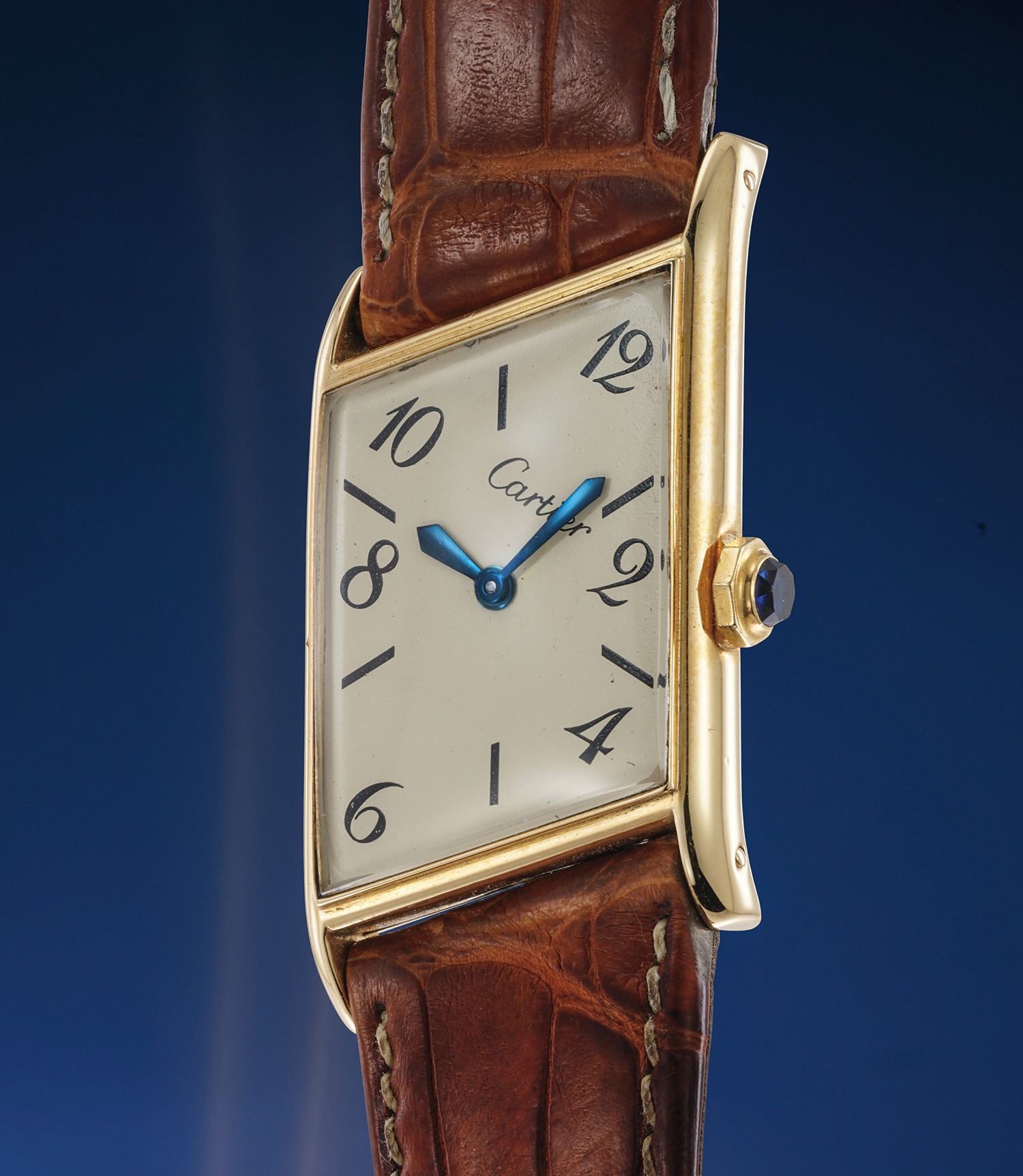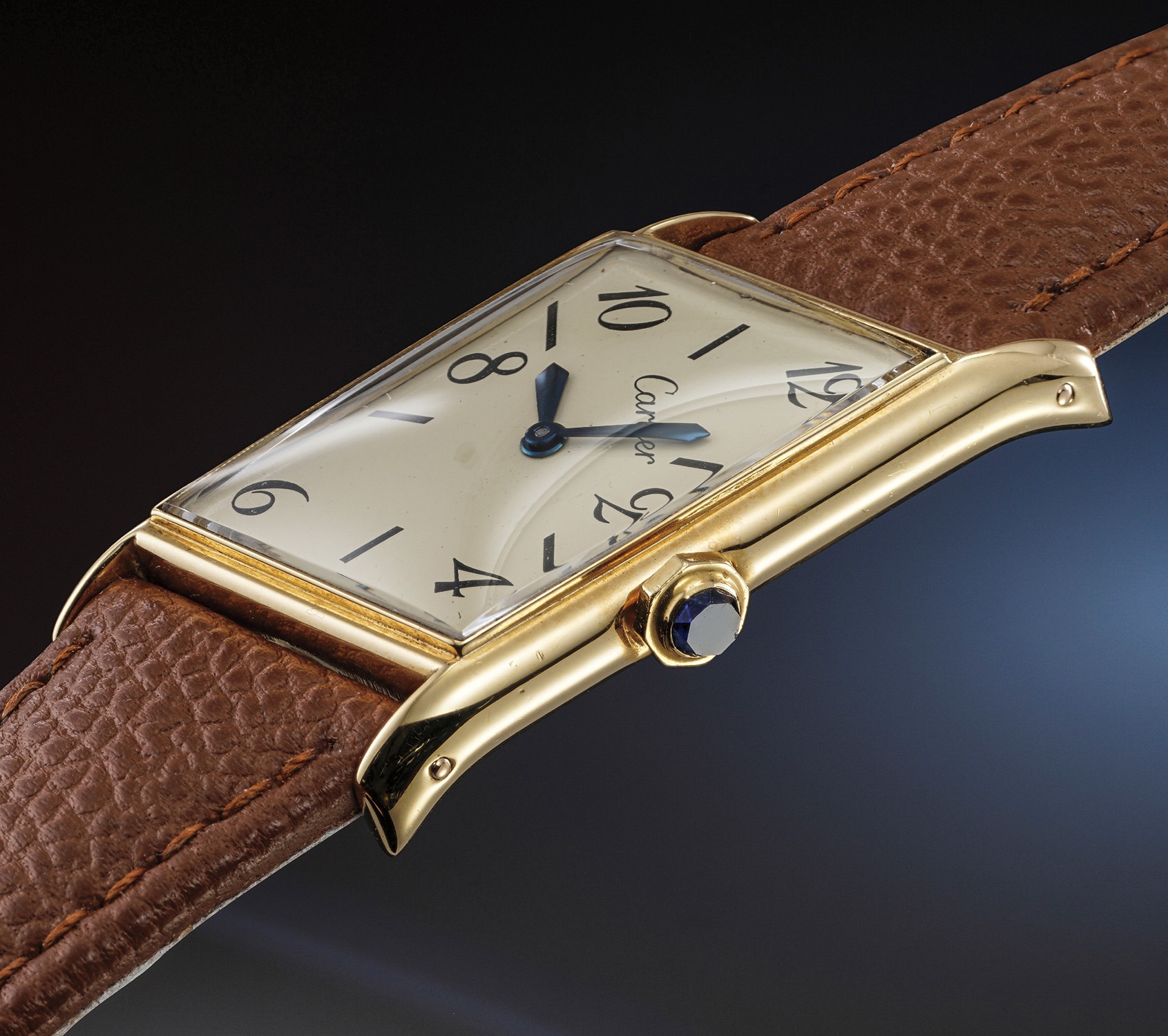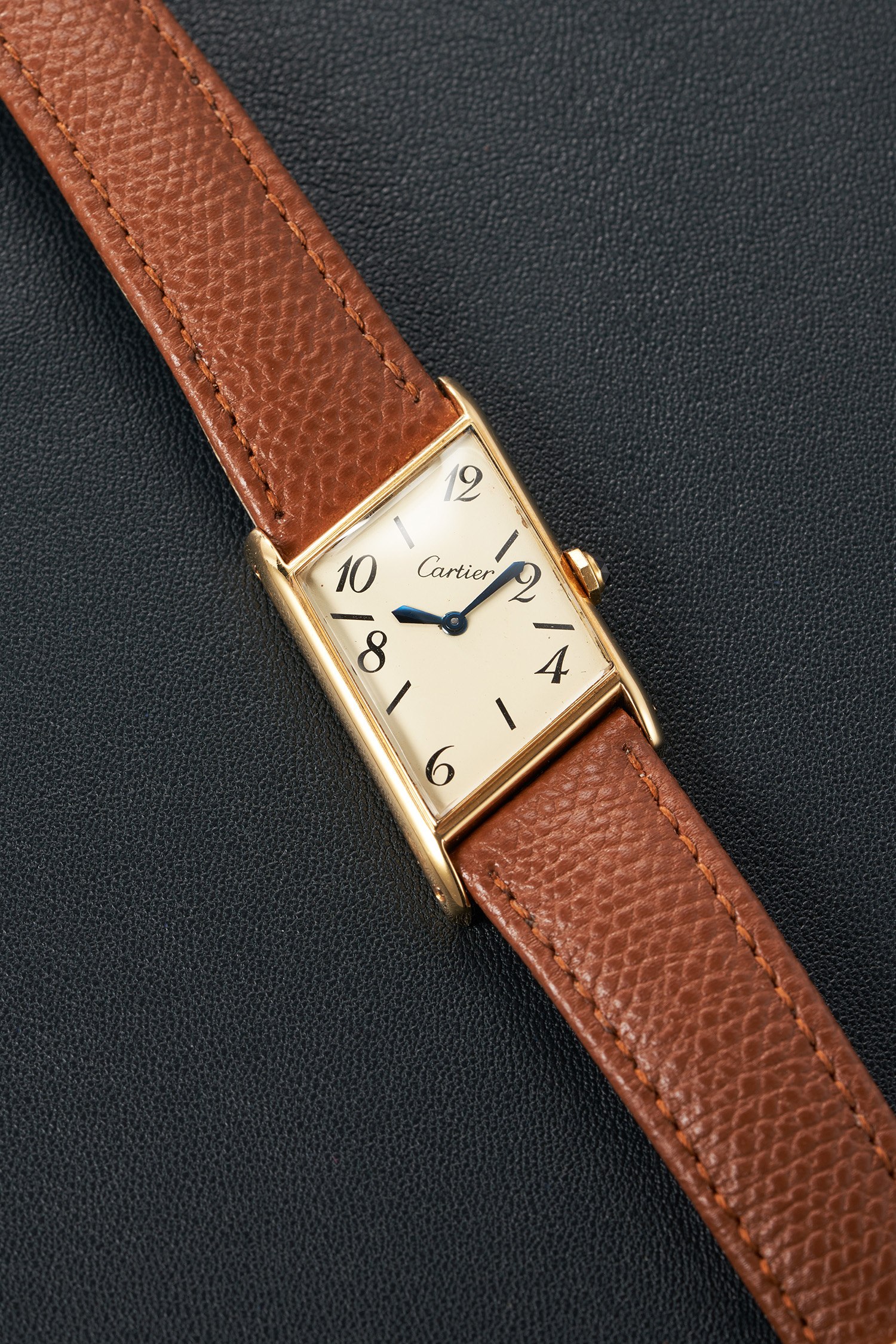











252Σ
Cartier
Paralélogramme
An important, extremely rare and attractive yellow gold asymmetric wristwatch
Full-Cataloguing
The present watch from the 1960s stands out due to its exceptional condition. All numbers and hallmarks on the caseback are crisp and visible, and show barely, if any signs of intervention over the years. The dial too is equally impressive as it has not been altered over the years and remains free of signs of aging. Vintage Cartier timepieces are far and few in between, and to discover one in such original condition is a truly rare occasion. To date, only a few handful of original examples exist, making the present timepiece incredibly rare and collectible.
Cartier
FrenchWith the Constitution of 1848 came a new standard for luxury in France. Founded one year prior by Louis-Francois Cartier, the house of Cartier was one of the first to use platinum in jewelry making. This incredibly expensive material became the stepping-stone for Cartier to experiment in form, mechanisms and attitude. It helped men move from pocket watches to wristwatches, effectively making the watch much more functional and prominent in a man's overall wardrobe.
Cartier did not only touch on functionality. Inspired by a commissioned painting by George Barbier featuring a black panther at the feet of an elegantly bejeweled woman, Cartier began incorporating wild animals in his designs—most notably, Cartier Panthère rings, bangle bracelets and watches. Yet it wasn't until the late 1960s that the house of Cartier debuted their iconic yellow and rose gold LOVE collection, which includes the famous bracelet that only a special screwdriver can open.